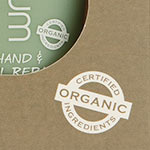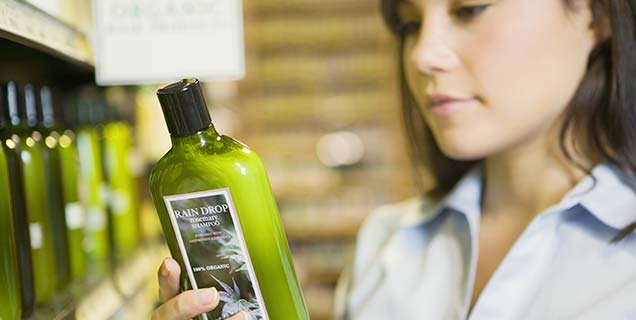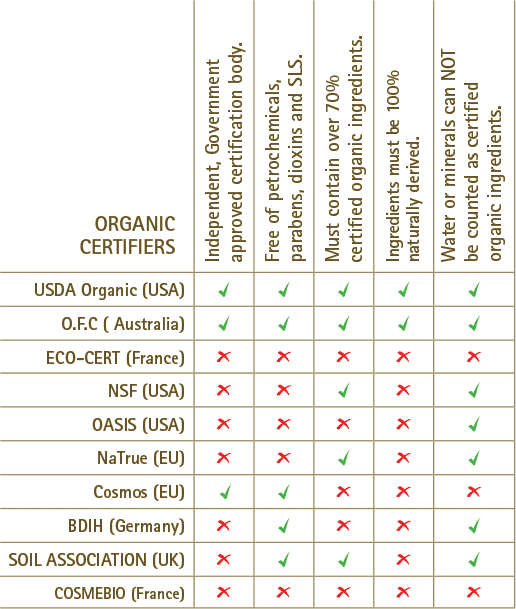Independent or Government approved certifications?
Many certification organisations have been formed by beauty brands or groups of cosmetic companies. Some are independent and some are independent AND regulated by their countries government. In Australia we have eight certification bodies and all eight are independent and Government approved.
Are products free of petrochemicals, parabens, dioxins and SLS?
Some certifiers allow even the most avoided and unsafe ingredients in their formulations. Research has shown that exposure to these substances can lead to eczema, psorasis, dermatitis and other health conditions.
 A product must contain over 70% certified organic ingredients.
A product must contain over 70% certified organic ingredients.
Some certifiers allow a product with as little as 10% certified organic content to bear a certification logo and label it as certified organic.
All ingredients must be 100% naturally derived:
Certified Organic does not equal natural in many cases. Many certifiers do not monitor the non certified organic content in a product. Therefore you may be purchasing a brand that the non certified content could be full of synthetic substances.
Water and minerals CANNOT be counted as certified organic ingredients:
Some certifiers count water separately. In some cases water can count as part of the certified organic ingredients. This means that a product containing a lot of water could be certified as organic just because it contains over 70% water.
The table below shows a few common certifiers and how they stack up to Australian standards. Of course this is not a complete list but it does highlight how different overseas certifiers can be.
Don’t put up with overseas companies putting your health at risk. Protect yourself and use an Australian Certified Organic product.
Click here to see part 1, Understanding Organic Labelling.


